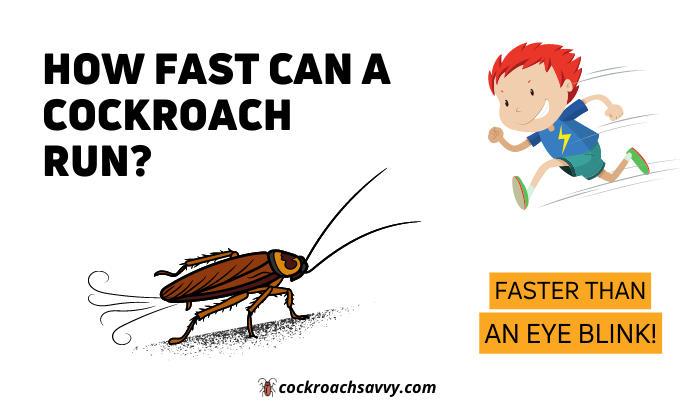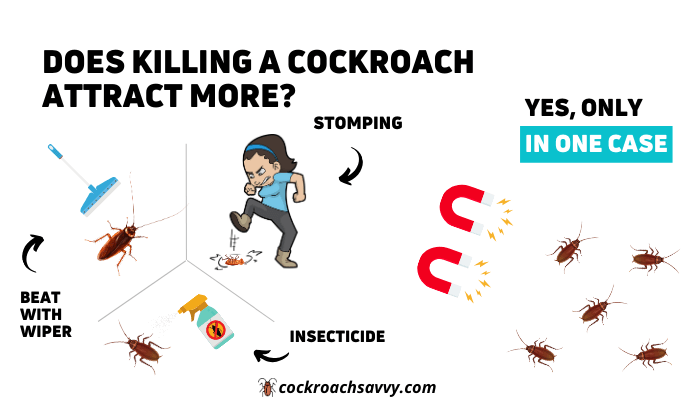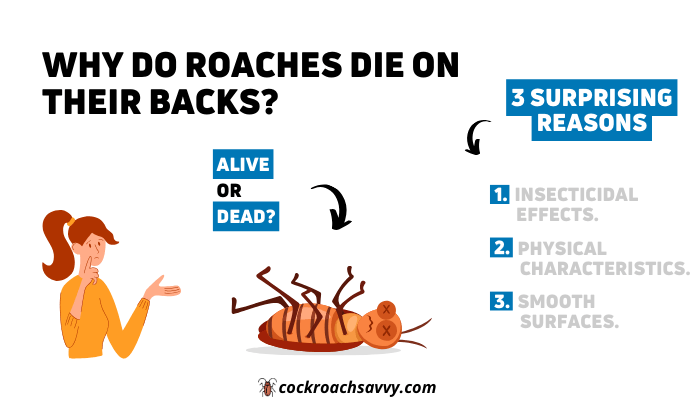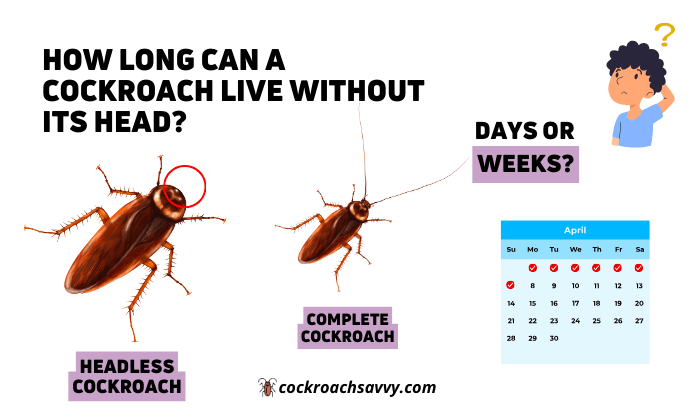Did you know that when it comes to speed, cockroaches are the true champions of the insect world?
These tiny creatures can scurry across the floor at lightning-fast speeds, leaving us in awe of their agility and quick reflexes.
Like, can you imagine?
Roaches can dart off faster than an eye blink!
Yes, you heard it right.
While an eye blink typically takes 100-150 milliseconds, roaches dart off at an astonishing 8.5 milliseconds, showcasing their incredible swiftness.
Imagine a creature so small yet so swift that it can outrun many larger animals.
In this article, we will delve into the captivating world of cockroaches. Explore the secrets behind their astonishingly fast movements and the figure behind How Fast Can A Cockroach Run?
Understanding Cockroach Anatomy and Physiology
To truly grasp the incredible speed of cockroaches, we must first understand their unique anatomy and physiology.
Cockroaches have a segmented body covered by a flexible exoskeleton, allowing them to move with fluidity and precision.
Their long, slender legs are equipped with specialized adaptations, providing both leverage and stability during rapid movements.
But it doesn’t stop there – their muscular system and nerve coordination work in perfect harmony, enabling them to achieve impressive speeds.
How Fast is a Cockroach? – Quick Snapshot
According to a study published in the Bulletin of the Brooklyn Entomological Society, following are the recorded speeds for two species of roaches:
In cockroaches, the American cockroach reigns as the fastest species, boasting an impressive top speed of 2.9 mph.
The table below shows the average speeds for two cockroach species and different genders:
| Cockroach Species | Speed in Miles/hour |
|---|---|
| American cockroach – Adult Male | 1.47 |
| American cockroach – Adult Female | 1.27 |
| German cockroach – Adult Male | 0.65 |
| German cockroach – Adult Female | 0.41 |
The Mechanics of Cockroach Locomotion
Cockroaches employ different modes of locomotion to navigate their surroundings with ease.
When it comes to running, they have a well-honed technique.
Their legs move in a synchronized pattern, propelling them forward in a smooth and efficient manner.
This running technique allows cockroaches to cover significant distances quickly.
But it’s not just about running; cockroaches can also sprint.
When faced with danger, they unleash bursts of high-speed movement that are truly astonishing.
These short sprints enable them to evade predators and disappear into the safety of their hiding places.
Furthermore, cockroaches are adept climbers.
Whether it’s scaling walls, crawling across ceilings, or conquering rough surfaces, their climbing abilities are nothing short of remarkable.
Their specialized leg structure and adhesive pads grant them the power to conquer even the most challenging terrains.
Measuring Cockroach Speed

To accurately measure the speed of these incredible creatures, researchers employ various methods and tools.
High-speed cameras and motion analysis techniques capture the intricate details of cockroach movement, providing invaluable insights into their speed capabilities.
Additionally, tracking devices and sensors help gather precise data on their locomotion patterns.
To ensure accurate measurements, scientists create experimental setups in controlled environments, mimicking the natural conditions in which cockroaches thrive.
Average Speed of Common Cockroach Species
Now that we understand the mechanisms behind cockroach speed, let’s take a closer look at two common species and their average speeds:
1. American cockroach (Periplaneta Americana):
The American cockroach, the fastest species among cockroaches, boasts an impressive top speed of 2.9 mph.
When it comes to average speeds, adult male American cockroaches can reach speeds of approximately 1.47 mph, while adult females can scuttle at speeds around 1.27 mph.
Their remarkable agility and swift movement enable them to quickly elude potential threats and find secure hiding spots.
2. German cockroach (Blattella germanica):
Although not as swift as the American cockroach, the German cockroach still exhibits considerable speed and agility.
Adult males of the species can sprint at speeds of around 0.65 mph, while adult females can reach speeds of approximately 0.41 mph.
Their rapid movements and being small in size contribute to their elusive nature, making them difficult to catch.
It’s important to note that the speed of cockroaches can vary depending on factors such as size, age, environmental conditions, and genetic adaptations.
Factors Influencing Cockroach Speed
To better understand the variations in cockroach speed, it’s essential to consider the factors that influence their swiftness.
Firstly, the size and age of a cockroach play a significant role.
Generally, larger and younger cockroaches tend to be faster due to their agile bodies and more robust muscular systems.
Moreover, environmental conditions can affect their speed.
Cockroaches thrive in warmer temperatures and high humidity, which can enhance their overall mobility and speed.
Other than that, genetic variations and adaptations within different species contribute to their unique speed potential.
Comparing Cockroach Speed to Other Animals
To put the speed of cockroaches into perspective, let’s compare them to other animals.
When it comes to relative speed, cockroaches leave ants, beetles, and many other insects in the dust.
Their ability to accelerate rapidly and react swiftly to changes in their environment sets them apart as true speed champions of the insect kingdom.
Real-Life Applications of Cockroach Speed
The remarkable speed and agility of cockroaches have not gone unnoticed by scientists and engineers.
In the realm of robotics, researchers draw inspiration from cockroach locomotion to develop agile and fast-moving robots capable of navigating complex environments.
By mimicking the strategies employed by cockroaches, engineers can create machines that can adapt to various terrains with efficiency and grace.
Furthermore, the concept of biomimicry takes cues from cockroach speed to improve human technology.
By studying the intricate movements and adaptations of cockroaches, scientists can apply these principles to enhance the design of prosthetic limbs, creating devices that offer increased mobility and freedom of movement.
Even in sports science, cockroach speed finds its applications.
Athletes and trainers study the swift movements of cockroaches to gain insights into enhancing their own speed and agility.
By understanding the mechanics behind cockroach locomotion, athletes can optimize their training routines and improve their performance on the field.
The End: Roach Speed Revealed
Wasn’t this article fast, like roaches running fast? – Just Joking . . .
Cockroaches truly defy our expectations with their astounding speed and agility.
Through their segmented bodies, flexible exoskeletons, slender legs, and remarkable coordination, they have evolved into masters of swift locomotion.
Understanding the intricacies of cockroach speed allows us to appreciate the wonders of nature and gain insights that can shape our own technological advancements.
FAQS
How Fast Can A roach Run?
A roach can run at impressive speeds by utilizing their agile leg movements and well-coordinated muscle systems.
The American cockroach, which is the fastest species of roaches, can reach top speeds of 2.9 mph (4.7 km/h).
Do cockroaches run faster than humans?
No, cockroaches can’t run faster than humans.
While cockroaches are incredibly fast for their size, with top speeds of up to 2.9 mph (4.7 km/h), humans have a much higher top running speed.
An average adult human has a walking speed of 4 mph (6.4 km/h) and a running speed of 6-8 mph (10-13 km/h), surpassing the swiftness of cockroaches.
Tip: The fastest human sprinters can reach speeds of around 27.8 mph (44.7 km/h)
Do cockroaches run away from humans?
Yes, cockroaches have a natural instinct to avoid humans and will often run away when they detect human presence.
They are adept at sensing vibrations and disturbances in their environment, which triggers their escape response.
However, it’s important to note that some cockroaches may become more tolerant of human presence in heavily infested areas or when they have adapted to living in close proximity to humans.
What is the fastest cockroach in the world?
The fastest cockroach species in the world is the American cockroach (Periplaneta Americana), reaching an impressive 2.9 mph (4.7 km/h).”
SOURCE: All the facts in this article are taken from this Research.




